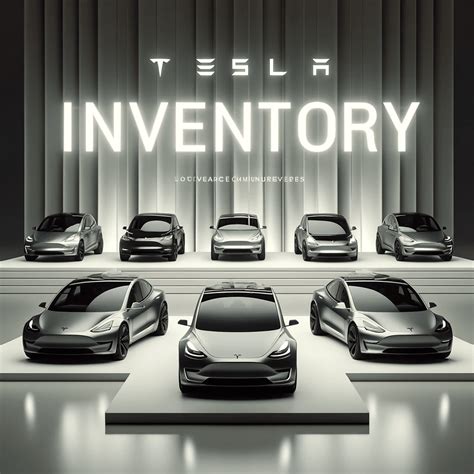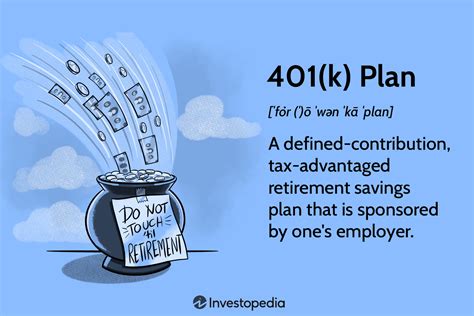
Tesla is aggressively pushing sales and offering incentives on its existing models, raising concerns about softening demand as inventory levels rise.
Tesla (TSLA) is scrambling to boost sales by offering incentives and pushing inventory, sparking speculation that demand for its vehicles may be waning. Recent observations indicate a growing number of finished vehicles sitting idle in parking lots, a potential sign that production is outpacing sales. This situation has prompted the electric vehicle giant to introduce various strategies aimed at moving its current inventory, including price adjustments, financing options, and other perks.
The increasing inventory comes at a pivotal time for Tesla, as the company prepares to launch new models and faces heightened competition in the electric vehicle market. Several factors could be contributing to this potential demand slowdown, including macroeconomic conditions, increased competition, and shifting consumer preferences.
Rising Inventory: A Red Flag?
One of the most visible indicators of potential demand issues is the growing number of unsold Tesla vehicles accumulating in holding lots. Observers have noted significant quantities of Model 3s, Model Ys, and even some Model S and Model X vehicles parked at various locations, awaiting shipment or delivery to customers. This contrasts with the more typical scenario of vehicles being quickly dispatched to meet strong customer demand. “Tesla has been trying to alleviate its growing inventory,” Yahoo Finance reported, highlighting the urgency of the situation.
The accumulation of inventory can strain a company’s financial resources, tying up capital and increasing storage costs. Moreover, it can signal underlying problems with product appeal or pricing strategy. To address this issue, Tesla has reportedly implemented various sales initiatives.
Incentives and Price Adjustments
To stimulate sales, Tesla has implemented a range of incentives. These include reduced prices on certain models, attractive financing options, and additional perks such as free Supercharger miles or enhanced Autopilot features. Price cuts, in particular, have been a key strategy for Tesla in recent months. While these price adjustments can attract new customers, they also raise concerns among existing owners who may feel that their vehicles have depreciated in value.
According to the original news report, “Tesla has been trying to alleviate its growing inventory with discounts and incentives.” These measures suggest that Tesla is actively trying to manage its inventory levels and stimulate demand in a challenging market environment. The effectiveness of these strategies remains to be seen, but they reflect a proactive approach to addressing potential demand issues.
Increased Competition in the EV Market
The electric vehicle market has become increasingly competitive, with numerous automakers introducing their own EVs. Companies like Ford, General Motors, Volkswagen, and Hyundai are investing heavily in electric vehicle technology and offering a wider range of models to consumers. This increased competition has intensified the pressure on Tesla, potentially impacting its market share and sales volume.
Tesla, which once enjoyed a dominant position in the EV market, now faces a more fragmented landscape. Consumers have more choices than ever before, and many of these new EVs offer compelling features, performance, and pricing. This shift in the competitive environment could be contributing to the potential slowdown in Tesla’s demand.
Macroeconomic Factors
Macroeconomic conditions also play a significant role in shaping consumer demand for electric vehicles. Economic uncertainty, high inflation, and rising interest rates can all dampen consumer spending, particularly on big-ticket items like cars. The current economic climate, characterized by these factors, could be contributing to the potential slowdown in Tesla’s sales.
Rising interest rates, in particular, can make it more expensive for consumers to finance vehicle purchases. This can impact the affordability of EVs and potentially deter some buyers from making a purchase. Similarly, high inflation can erode consumer purchasing power and lead to a reduction in discretionary spending.
Shifting Consumer Preferences
Another factor that could be influencing Tesla’s demand is shifting consumer preferences. While Tesla has been a pioneer in the electric vehicle market, some consumers may be looking for alternatives that better suit their needs or preferences. Some consumers might find other brands provide better features, more comfortable interiors, or are priced more competitively.
Furthermore, concerns about the environmental impact of battery production and disposal, as well as the sourcing of raw materials, could be influencing some consumers’ purchasing decisions. While EVs are generally considered to be more environmentally friendly than gasoline-powered cars, the overall environmental footprint of EVs is still a subject of debate and discussion.
Tesla’s Response and Future Outlook
Faced with potential demand challenges, Tesla has taken several steps to address the situation. In addition to price cuts and incentives, the company is also focused on expanding its production capacity and introducing new models. The upcoming Cybertruck, for example, has generated significant interest and could provide a boost to Tesla’s sales.
Tesla is also continuing to invest in its Supercharger network, which provides convenient and reliable charging options for Tesla owners. This infrastructure advantage remains a key differentiator for Tesla and helps to alleviate range anxiety among potential buyers.
Despite the potential demand headwinds, Tesla remains a dominant player in the electric vehicle market. The company has a strong brand reputation, advanced technology, and a loyal customer base. However, the increasing competition and changing market dynamics require Tesla to adapt and innovate to maintain its leadership position.
The company’s ability to manage its inventory effectively, introduce compelling new models, and navigate the macroeconomic challenges will be crucial to its future success. Tesla’s response to these challenges will be closely watched by investors, analysts, and consumers alike.
Impact on Investors
The news of potentially softening demand and rising inventory has implications for investors in Tesla. A slowdown in sales could impact the company’s revenue and profitability, potentially leading to a decline in its stock price. Investors will be closely monitoring Tesla’s sales figures, production numbers, and inventory levels to assess the health of the company.
However, it’s important to note that Tesla remains a growth company with significant long-term potential. The electric vehicle market is expected to continue to grow in the coming years, and Tesla is well-positioned to benefit from this trend. The company’s innovative technology, strong brand, and expanding global presence provide a solid foundation for future growth.
Analysis of Tesla’s Current Strategy
Tesla’s current strategy of offering discounts and incentives is a common tactic used by automakers to stimulate sales and manage inventory. However, it also reflects a change in the market dynamics. In the past, Tesla has been able to command premium prices for its vehicles due to high demand and limited supply. The current situation suggests that the balance of power is shifting, and Tesla needs to be more competitive on pricing.
The effectiveness of these incentives will depend on several factors, including the magnitude of the price cuts, the attractiveness of the financing options, and the overall economic conditions. If the incentives are not sufficient to stimulate demand, Tesla may need to consider further measures, such as reducing production or introducing new models more quickly.
The Cybertruck Effect
The upcoming launch of the Cybertruck is a potentially significant event for Tesla. The futuristic-looking pickup truck has generated considerable buzz and has the potential to attract new customers to the brand. However, the Cybertruck’s production has been delayed, and it remains to be seen whether Tesla can ramp up production quickly enough to meet demand.
The Cybertruck’s success will also depend on its pricing and features. If the Cybertruck is priced too high or if its features are not competitive, it may not be able to achieve its full potential. However, if Tesla can deliver a compelling product at a competitive price, the Cybertruck could provide a significant boost to the company’s sales.
The Role of the Supercharger Network
Tesla’s Supercharger network remains a key competitive advantage. The network provides convenient and reliable charging options for Tesla owners, which is a major selling point for potential buyers. Tesla has been expanding its Supercharger network rapidly in recent years, and it plans to continue to invest in this infrastructure.
The availability of charging infrastructure is a critical factor in the adoption of electric vehicles. By providing a robust and convenient charging network, Tesla has helped to alleviate range anxiety among potential buyers and has made it easier for people to switch to electric vehicles.
The Future of Tesla
The future of Tesla depends on its ability to navigate the challenges of the evolving electric vehicle market. The company needs to continue to innovate, introduce compelling new models, and manage its costs effectively. Tesla also needs to address the concerns about its supply chain and ensure that it can secure the necessary raw materials to meet its production targets.
Despite the challenges, Tesla remains a formidable player in the electric vehicle market. The company has a strong brand, advanced technology, and a loyal customer base. If Tesla can execute its strategy effectively, it has the potential to remain a leader in the electric vehicle market for many years to come.
The Impact of Interest Rate Hikes on EV Sales
One of the significant macroeconomic factors impacting Tesla, and the EV market generally, is the series of interest rate hikes implemented by central banks globally. These increases directly affect consumer affordability and financing options for vehicles. As interest rates rise, the cost of borrowing money to purchase a car also increases, making it more expensive for consumers to finance their vehicle purchases.
For a big-ticket item like an electric vehicle, the impact can be substantial. Higher interest rates can increase monthly payments, potentially pushing potential buyers out of the market. This is especially true for price-sensitive consumers who may opt for more affordable gasoline-powered vehicles or delay their purchase altogether.
The sensitivity to interest rates is heightened among first-time EV buyers, who may be less familiar with the long-term cost savings associated with electric vehicles, such as lower fuel and maintenance costs. They may be more focused on the initial purchase price and monthly payments.
Tesla, while positioned as a premium brand, is not immune to these macroeconomic pressures. The increasing cost of financing can impact sales, especially among consumers considering the more expensive models. This is a critical point as Tesla aims to expand its customer base beyond early adopters and appeal to a broader audience.
The Global Dimension
Tesla’s challenges are not limited to the United States. The company faces similar issues in other key markets, such as China and Europe. In China, Tesla faces intense competition from local EV manufacturers, such as BYD and Nio, which are offering a wide range of affordable and appealing electric vehicles.
In Europe, Tesla faces similar competition, as well as regulatory challenges and varying levels of government support for electric vehicles. The company also needs to navigate the complexities of different national markets and consumer preferences.
The global nature of Tesla’s business means that it is exposed to a wide range of economic and political risks. Changes in exchange rates, trade policies, and regulatory environments can all impact the company’s profitability and sales.
Tesla’s Energy Business
While much of the focus is on Tesla’s automotive business, it’s crucial not to overlook its energy generation and storage division. This segment includes products like solar panels, solar roofs, and energy storage systems (Powerwall, Megapack). While not as widely discussed as vehicle sales, Tesla’s energy business contributes significantly to its overall revenue and profitability.
The demand for renewable energy solutions and energy storage is growing rapidly as governments and businesses seek to reduce their carbon footprint and improve energy resilience. Tesla is well-positioned to capitalize on this trend, thanks to its innovative technology and vertically integrated business model.
However, the energy business also faces challenges, including competition from other providers of renewable energy solutions, regulatory hurdles, and the need for skilled installation and maintenance services. Tesla needs to continue to invest in its energy business and expand its reach to fully realize its potential.
Tesla’s Autonomy Efforts
Tesla’s long-term vision includes achieving full autonomy, or self-driving capability. This is a key differentiator for the company and has the potential to revolutionize transportation. Tesla has been investing heavily in autonomous driving technology for many years and has made significant progress.
However, achieving full autonomy is a complex and challenging undertaking. There are technological hurdles to overcome, as well as regulatory and ethical considerations. Tesla faces competition from other companies developing autonomous driving technology, such as Waymo and Cruise.
The successful deployment of full autonomy could transform Tesla’s business model. The company could offer ride-hailing services, delivery services, and other autonomous transportation solutions. This could generate significant new revenue streams and further solidify Tesla’s position as a leader in the automotive industry.
Tesla’s Manufacturing Expansion
To meet growing demand and expand its global reach, Tesla has been investing heavily in manufacturing capacity. The company has built new Gigafactories in China and Germany, and is expanding its existing factories in the United States.
These investments are crucial for Tesla to increase production volumes and reduce manufacturing costs. However, building and ramping up new factories is a complex and expensive undertaking. Tesla needs to manage these projects effectively to avoid delays and cost overruns.
The expansion of Tesla’s manufacturing capacity will also allow the company to produce a wider range of vehicles and cater to different market segments. This will help Tesla to compete more effectively in the global electric vehicle market.
The Role of Government Incentives and Regulations
Government incentives and regulations play a significant role in shaping the electric vehicle market. Many countries and regions offer subsidies, tax credits, and other incentives to encourage the adoption of electric vehicles. These incentives can make EVs more affordable and accelerate their adoption.
Regulations, such as fuel efficiency standards and emission mandates, can also drive demand for electric vehicles. These regulations can incentivize automakers to produce and sell more EVs and penalize them for selling gasoline-powered cars.
Tesla has benefited from government incentives and regulations in the past, and it is likely to continue to do so in the future. However, the level of government support for EVs can vary widely across different countries and regions, which can impact Tesla’s sales and profitability.
Conclusion: A Complex and Evolving Landscape
The electric vehicle market is a complex and rapidly evolving landscape. Tesla faces a number of challenges, including increasing competition, macroeconomic headwinds, and regulatory uncertainty. However, the company also has significant strengths, including a strong brand, innovative technology, and a global manufacturing footprint.
Tesla’s ability to navigate these challenges and capitalize on its strengths will determine its long-term success. The company needs to continue to innovate, manage its costs effectively, and adapt to the changing market dynamics. The future of Tesla remains uncertain, but the company is undoubtedly a major force in the automotive industry and is likely to play a significant role in the transition to electric vehicles.
Frequently Asked Questions (FAQ)
1. Is Tesla facing a demand problem?
Recent reports suggest that Tesla is experiencing a potential slowdown in demand, indicated by rising inventory levels and the introduction of sales incentives. While Tesla remains a dominant player in the EV market, increased competition and macroeconomic factors could be contributing to this shift.
2. What incentives is Tesla offering to boost sales?
Tesla has been implementing various incentives, including reduced prices on certain models, attractive financing options, and additional perks such as free Supercharger miles or enhanced Autopilot features, to stimulate sales and reduce its inventory.
3. How is increased competition affecting Tesla’s sales?
The electric vehicle market has become increasingly competitive, with numerous automakers introducing their own EVs. This increased competition has intensified the pressure on Tesla, potentially impacting its market share and sales volume as consumers have more choices.
4. What macroeconomic factors are influencing Tesla’s demand?
Macroeconomic conditions, such as economic uncertainty, high inflation, and rising interest rates, can dampen consumer spending, particularly on big-ticket items like cars. Rising interest rates, in particular, can make it more expensive for consumers to finance vehicle purchases.
5. What is the potential impact of the Cybertruck on Tesla’s sales?
The upcoming launch of the Cybertruck is a potentially significant event for Tesla. The futuristic-looking pickup truck has generated considerable buzz and has the potential to attract new customers to the brand, providing a boost to Tesla’s sales if it can be produced and priced competitively.









